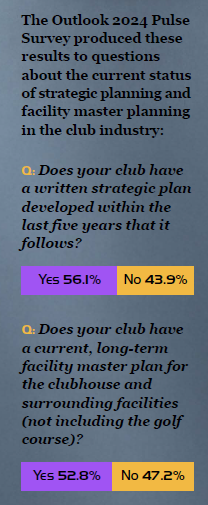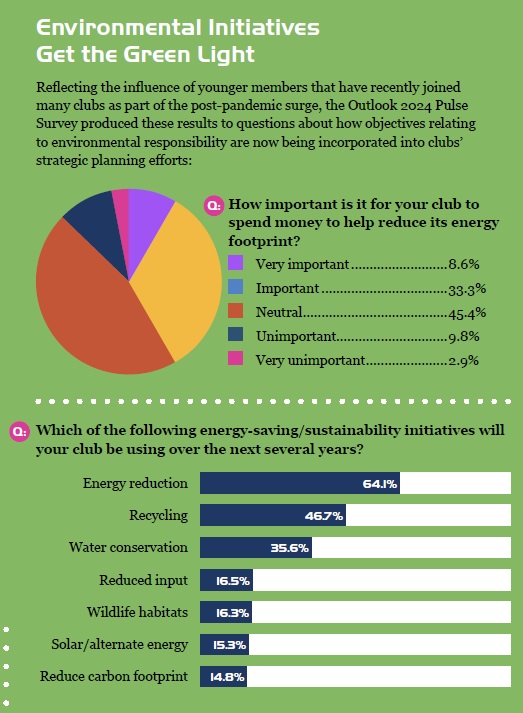While it is encouraging to see that small majorities were recorded in the responses to each question in the Pulse Survey, other results, as detailed in this issue, highlight many reasons why the percentages in both cases should be much higher. With clubs focused on continuous improvement in virtually all areas of their operation and management, having and following the roadmaps provided by strategic and facility master plans is critical to sustaining the momentum the industry is currently enjoying.

And not just any plan will do. The majorities reflected in the responses to the Pulse Survey questions undoubtedly include many “yes” answers that are misleading, because confusion has developed in recent years over what truly constitutes a strategic plan or a facility master plan. Many clubs have associated strategic planning with approaches that are limited to specific areas such as golf, dining, human resources or other parts of club operations and management. While there is nothing wrong with addressing specific club needs and problems, a comprehensive approach that embraces all individual club goals—and includes action plans for achieving them—is essential for sustained success.
As the club industry continue to enjoy prosperity coming out of the pandemic, now is the time for every club to develop and implement a sound overall strategic plan, based on goals that will help to achieve its specific mission and vision and keep it on course through leadership transitions. A well-constructed and enduring strategic plan can then lead to effective planning and implementation of all of the facilities, programs, services and amenities that will sustain a club’s relevance and keep it attractive to new generations of members. On the other hand, clubs that do not take the proper approach to comprehensive strategic planning will be destined to deal with declining memberships, out-of-date and deteriorating facilities, and a host of management and operating crises that threaten their very survival.

Respondents then expanded on their plans in these areas by reporting a variety of specific environmental initiatives and influencing factors:
- Updating parking for EV cars that weigh too much for a current structure.
- Replacing inefficient A/C chiller units and 50-year old, single-pane windows in the main clubhouse.
- Preparing for a state mandate to have only electric golf carts in the next five years.
- Rebuilding all major facilities with energy-efficient fixtures and design.
- Planning to comply with a city’s newly passed building emissions reduction and disclosure ordinance.
- Switching to power provided by a co-generation plant.
- Making a connection to reclaimed water.
- Undertaking initiatives for water quality and shoreline stability.
- Restoring historic windows with dual-pane glass.
- Installing filtered water stations throughout the property.


